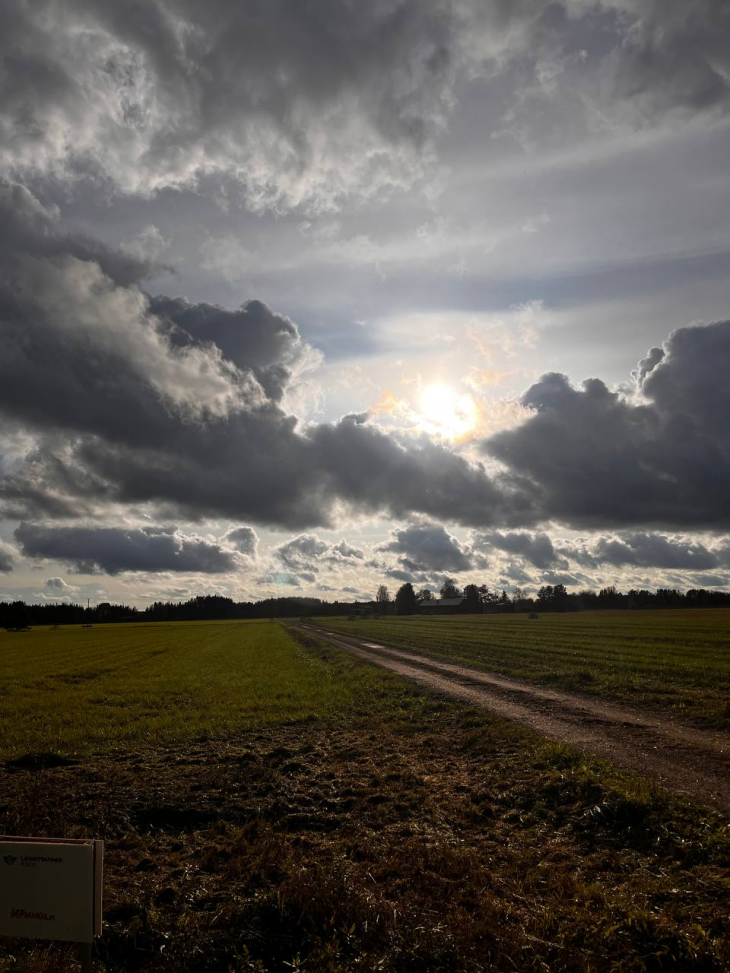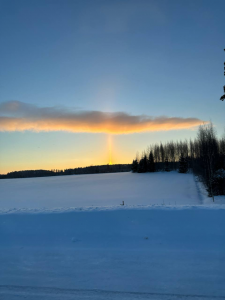
Clouds
Vol. 26, Issue 14, 26 January 2024
We often think that clouds consist of something very light, but dense, and stepping on them, we will not fall to the ground, but will remain on their soft surface. These representations are only reinforced by numerous cartoons and fairy tales where the characters ride on these celestial objects. In fact, clouds are not soft, fluffy and pleasant. These are water droplets or ice crystals in the atmosphere. They are also often called cloud elements. It turns out that the composition of clouds can be different at different temperatures: clouds consist of water droplets if the air temperature in the cloud exceeds -10 °C. These are ordinary rain clouds. At air temperatures from -10 to -15 °C, clouds have a mixed composition (water droplets and ice crystals). It is these clouds that send us sleet or snow with rain. When the temperature in the cloud is below -15 °C, the cloud consists entirely of crystals that turn into snowflakes.
Lenticular clouds are visible in this image. Their appearance indicates that there are strong horizontal air currents in the atmosphere, forming waves over mountain obstacles, and that there is a sufficiently high moisture content in the air. This is usually due to the approach of an atmospheric front or to the energetic transfer of air from remote areas.

Now aerologists fly mainly by plane. The aircraft allows you to conduct research where it is of the greatest interest. In addition, many different instruments can be lifted on an airplane (neither a radiosonde nor a rocket allow this) and a whole range of measurements and observations can be performed at once.
Clouds have different shapes and therefore have different names. In 1803, the English pharmacist Luke Howard classified clouds according to their outlines, distinguishing 3 main types:
- Cumulus clouds
- Cirrus clouds
- Layered clouds.
Cumulus clouds appeared in the sky by noon on clear summer days, slowly sailed somewhere and disappeared each time in the evening, so that the next day the day will reappear by noon. These are clouds of good weather. Cirrus clouds are clouds of the upper tier, they are formed only at altitudes of more than 6 kilometers and consist of ice crystals. These are delicate clouds of white color, wavy or filamentous. Cirrus clouds never produce precipitation. Layered clouds are a monotonous gray layer of clouds that gives the entire sky the same gloomy, overcast appearance. These are clouds of the lower tier, and, having thickened, they can bring rain, but this rain will not be as strong as the rain brought by layered rain clouds. Currently, scientists have provided a more detailed and accurate classification of clouds, identifying 10 types of clouds located on different tiers. There are clouds created by man. They are called artificially created cirrus clouds, better known as condensation trails from airplanes.

Clouds exist not only on Earth, but also on other planets and moons of the Solar system — Mars, Venus, Titan, Triton. There, the nature of the clouds is completely different due to the climatic conditions. For example, on Venus, the basis of the cloud is sulfur dioxide and sulfuric acid, so there are real acid rains.
- New Year’s mood - 22nd November 2024
- Minimalism is a way of life. Where to begin? - 15th November 2024
- Why do you need an air humidifier? - 8th November 2024
